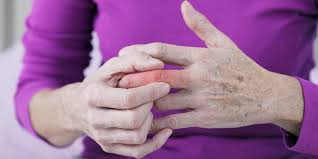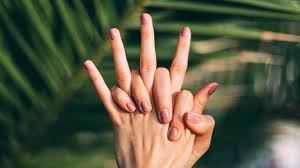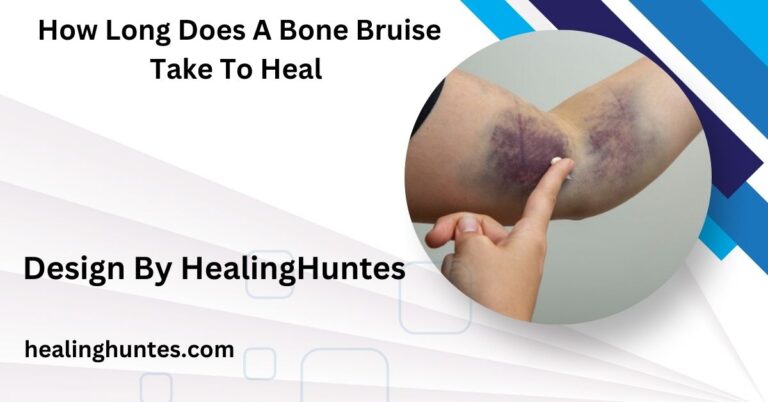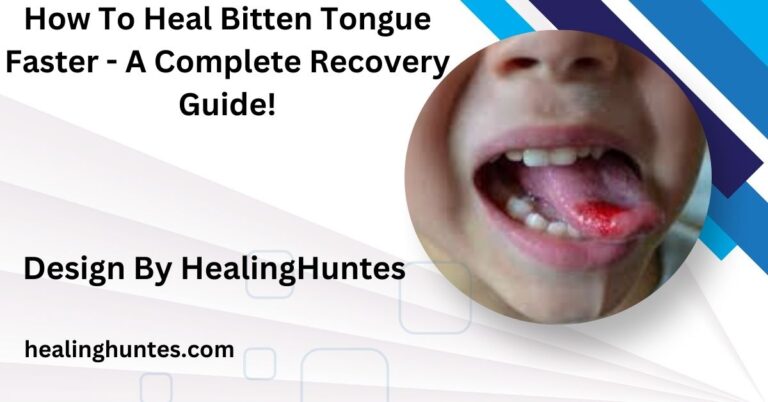How Long Does A Sprained Finger Take To Heal – Tips for a Speedy Recovery!
Sprained fingers generally heal in 1 to 8 weeks, depending on the severity, with rest and proper care speeding up recovery.
In this article, we’ll cover everything from the causes and types of sprains to treatment methods, healing stages, and recovery timelines, helping you get back to normal function as smoothly as possible.
What is a Sprained Finger:

A sprained finger happens when the ligaments around a finger joint are overstretched or torn, usually due to sudden impact or force. Ligaments are the bands of tissue that connect bones, and they provide essential stability for joint movements. When a finger ligament is injured, it can lead to swelling, stiffness, pain, and limited mobility, often making it challenging to perform even simple tasks. Finger sprains are typically divided into three severity levels mild, moderate, and severe and the healing time depends largely on the type and extent of the injury.
Causes of a Sprained Finger:
Finger sprains often occur during sports activities, especially those that require catching, throwing, or sudden gripping movements, such as basketball, football, and volleyball. These sports expose fingers to high-impact forces that can stretch or twist the ligaments. However, sports aren’t the only culprit; finger sprains can also result from simple, everyday actions. Lifting heavy objects improperly, stumbling and using your hand to break a fall, or accidentally jamming a finger can all lead to a sprain.
Also Read: How Long Does It Take For A Piercing To Heal – A Must-Read Guide!
Types of Finger Sprains:
- Grade I (Mild Sprain): This is the least severe type, involving only minor stretching of the ligaments without any tears. Mild sprains cause slight discomfort and may include swelling or tenderness. In most cases, you’ll still have full range of motion, but the finger might feel sore.
- Grade II (Moderate Sprain): A moderate sprain involves a partial tear in the ligament. This injury results in more noticeable pain, swelling, and restricted movement. You may find it challenging to bend or straighten the finger without pain.
- Grade III (Severe Sprain): Severe sprains are the most serious, involving a complete tear of the ligament. Pain, swelling, and bruising are pronounced, and the joint may feel unstable. This type of sprain can sometimes lead to long-term complications if not treated properly.
Understanding the grade of your sprain can help you set realistic expectations for recovery time and treatment options.
How Long Does a Sprained Finger Take to Heal:

- Grade I (Mild Sprain): Heals within 1 to 2 weeks with basic at-home care and rest.
- Grade II (Moderate Sprain): Takes about 3 to 6 weeks for full recovery, often requiring more focused treatment, including splinting or taping.
- Grade III (Severe Sprain): May take 6 to 8 weeks or longer to heal. Medical supervision, physical therapy, and even surgical intervention are sometimes necessary for complete recovery.
With proper care, most finger sprains heal fully, but severe sprains can occasionally leave lasting stiffness or joint instability. Your adherence to rest, immobilization, and rehabilitation exercises will impact how quickly and effectively your finger recovers.
The Healing Stages of a Sprained Finger:
Acute Phase (0-72 Hours):
This initial stage is focused on managing pain and swelling. Pain and swelling typically peak during the first few days, and the RICE method—rest, ice, compression, and elevation—is crucial. Ice packs can be applied in 15-20 minute intervals every few hours to reduce swelling. Gentle compression with a wrap or bandage and elevating the hand can also aid in reducing inflammation.
Subacute Phase (4-21 Days):
During this stage, the swelling and bruising start to subside, and the focus shifts toward regaining some mobility. Gentle movements are encouraged, but avoid anything that causes significant discomfort. The finger’s natural healing processes strengthen the damaged ligaments, gradually restoring function.
Remodeling Phase (3-6 Weeks):
In this final stage, the ligament is actively healing and regaining its full strength. Gentle stretching and strengthening exercises become essential to restore the finger’s flexibility and prevent stiffness. Your healthcare provider or physical therapist may provide guidance on these exercises to ensure proper technique.
Also Read: How Much Does Reiki Healing Cost – A Complete Guide!
Treatment Options for a Sprained Finger:
Treating a sprained finger effectively requires immediate care followed by ongoing support as the ligament heals. Here are the primary treatment steps:
- Rest and Immobilization: Limiting movement in the injured finger is essential to prevent further ligament damage. Immobilization through splinting or taping to a neighboring finger (buddy taping) can provide additional support and stabilization.
- Cold Therapy: Applying ice to the injured area for 15-20 minutes at a time helps manage pain and swelling. Repeat this every few hours, especially during the first couple of days.
- Pain Management: Over-the-counter medications, such as ibuprofen or acetaminophen, can help relieve pain and reduce inflammation. Be sure to follow dosage instructions and avoid any medications that could interfere with your specific health needs.
- Compression Bandaging: Wrapping the finger with an elastic bandage provides light compression, which can further control swelling and support the joint as it heals.
For moderate to severe sprains, it may be necessary to use a specialized splint or seek medical advice to ensure the ligament heals properly. Regular follow-up with your healthcare provider can track recovery progress and address any complications that may arise.
Exercises for Finger Rehabilitation:

- Finger Bending: Slowly bend and straighten the injured finger, working within a comfortable range. This exercise helps restore movement without overstraining the ligament.
- Grip Strengthening: Use a soft ball or sponge to improve grip strength. Gradually squeeze and release, building strength over time. This is especially helpful for sports or activities requiring strong hand function.
- Finger Extension: Place a rubber band around all your fingers and gently try to open your fingers against the band’s resistance. This helps strengthen supporting muscles around the joint.
These exercises should be performed cautiously to avoid overstressing the injured ligament. If any movement causes pain, stop immediately and consult a therapist for guidance.
Preventing Future Finger Sprains:
- Use Protective Gear: For sports involving hand contact, such as gloves or finger supports, protective gear can help absorb impacts.
- Practice Proper Techniques: In sports or activities that involve gripping, throwing, or catching, mastering the correct techniques can minimize injury risks.
- Build Hand Strength: Regularly exercising your hand and finger muscles improves stability and reduces the chances of ligament overuse or strain.
These preventive steps are simple yet effective ways to keep your fingers healthy and injury-free.
Also Read: Signs Herniated Disc Is Healing – Key Indicators!
When to Seek Medical Attention:
- Persistent Pain or Swelling: Ongoing discomfort, especially beyond a few weeks, may indicate complications.
- Visible Deformity: A finger that appears crooked or bent out of shape could be fractured or dislocated.
- Instability in the Joint: If the finger feels loose or wobbly, the ligament may need more support, possibly requiring surgical repair.
Getting a timely evaluation can ensure that you receive the appropriate treatment for a successful recovery.
FAQs
1. How can I tell if my finger is sprained or broken?
Severe pain, deformity, or an inability to move the finger could indicate a fracture, so consult a doctor if you have these symptoms.
2. Can I use my hand while my finger is healing?
Yes, but avoid putting strain on the injured finger. Immobilization or buddy taping can protect it while you use the other fingers.
3. How long should I ice my sprained finger?
Applying ice for 15-20 minutes every few hours during the first 48 hours is typically effective in reducing swelling.
4. Is stiffness normal after a sprained finger heals?
Mild stiffness is common post-recovery, but gentle exercises can help restore flexibility.
5. Should I tape my sprained finger?
Yes, buddy taping can provide stability and protect the finger from accidental bumps, especially in the early recovery phase.
Conclusion
Spraining a finger may seem like a minor inconvenience, but it requires proper care and patience to ensure a full recovery. With effective treatment and a commitment to following recovery guidelines, even severe sprains can heal within weeks to months. Remember, giving your finger the rest and support it needs during recovery can prevent complications and minimize the risk of reinjury. If pain persists or worsens, don’t hesitate to seek medical attention to preserve long-term finger health.






